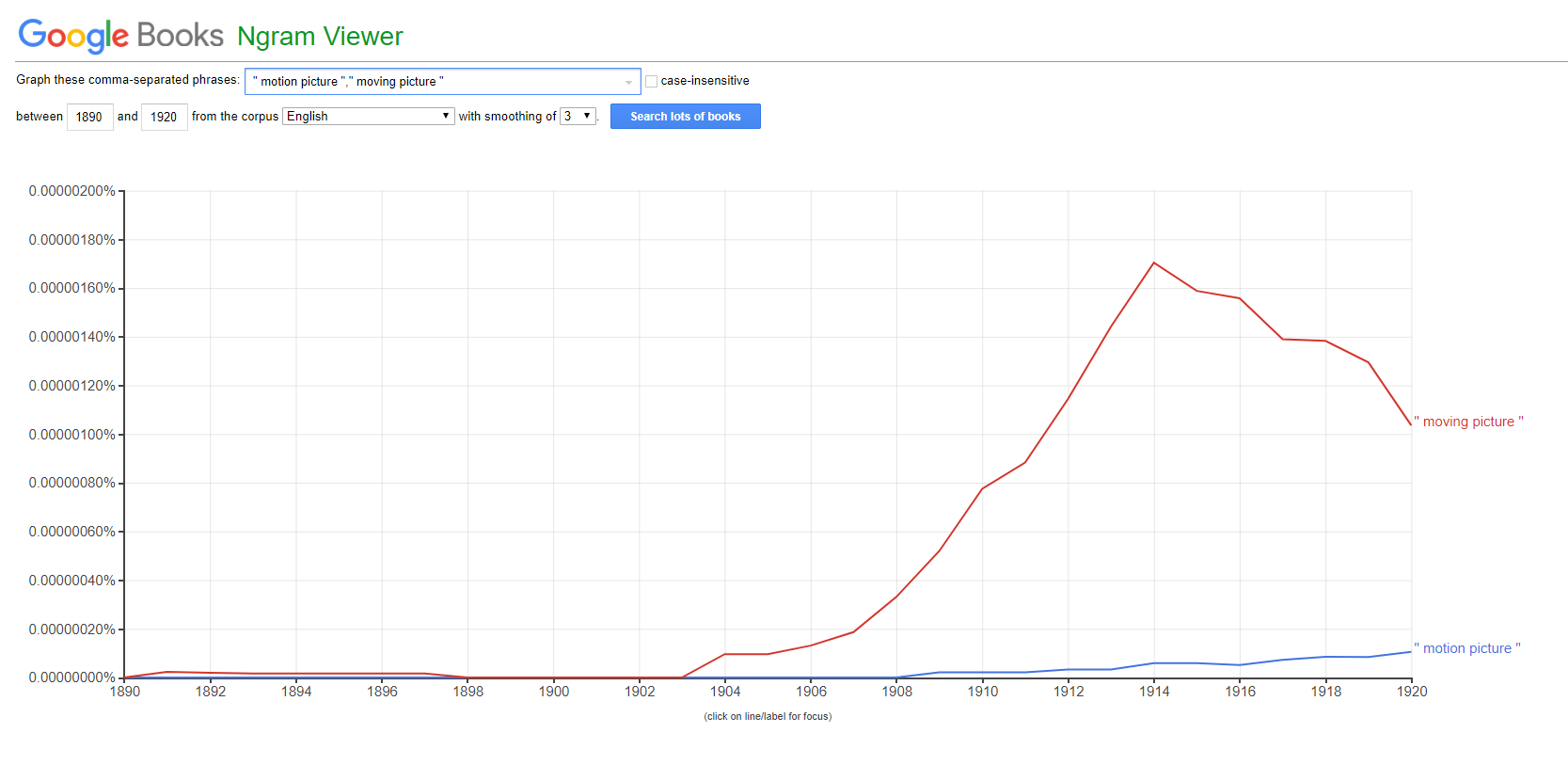Nomenclature
When conducting historical research, it is important to know the nomenclature of the time period. When researching film history, one encounters the problem of various terms being used to identify the new media. The most commonly encountered terms are: film, movie, moving picture, and motion picture. This section uses the Google Ngram tool and Voyant to attempt to provide some guidance for which terms were being used in the early twentieth century and in Ohio particularly. The Google Ngram tool searches the term throughout the sizable collection of Google Books, and the results of that search are immediately below. The second search utilizes plain text files of several newspapers from Ohio 1912-1917 in the Voyant Trends tool, to see if any clear term rises above the rest.
Ngram: All Terms, 1890-1920

While at first glance the results of this Ngram may seem to be definitive, there are some points of speculation to note. First, the chart shows the term "film" being popular prior to 1890 and thus prior to the new media that we are researching. The use "film" in this case is most likely referring "film" as part of still photography. Secondly, it is surprising to find that the term "movie" was utilized at such an early period, since it is often, anecdotally, understood that the term "movie" developed as an abbreviation of the term "moving picture." Apparently that abbreviation developed quite early. Lastly, this Ngram shows no results, relatively, for the terms "moving picture" and "motion picture," one can hazard an educated guess that the result of "film" set too high a bar for the other results to appear. As will be seen in the next Ngram and the Newspapers, the terms were being used frequently.
Ngram: "Moving" and "Motion" Picture, 1890-1920

This Ngram more accurately represents what one would expect to see. The Nickelodeons and storefront theaters began gaining traction in the first decade of the twentieth century, but film as a theatrical event began to develop around 1915. It is no surprise that the phrase "moving picture" would hit its peak in 1914, a time when the new media was beginning to gain traction and popularity. The term "motion picture" would not be widely used till some time later.
Trends: Word Used for Film
This Voyant trends analysis shows the use of the terms in Ohio newspapers over a select period of time, this corpus is of newspapers talking specifically about film censorship (click here if embedded tool does not load). It seems that "film" was commonly used throughout all the articles (no surprise since the Board was titled The Ohio Board of Film Censorship), but the use of "picture" (in either moving or motion) was more popular. The next trends tool shows a comparison between the two uses of "picture."
Trends: "Moving" or "Motion"
Rather straight forward, this comparison of the terms "moving" and "motion" show that "moving" was by far the more commonly used term in this corpus, barring a few exceptions (click here if embedded tool does not load).
Conclusion
Based on the combination of the Google Ngram analysis and the select newspaper search, the two clear terms to use for 1890-1920 film research are: film and "moving picture." While terms such as movie and motion picture did appear from time to time, they were not significant utilized till later in the twentieth century. Since the first Ngram might be not be reliable due to the use of the term "film" for photography purposes, we can conclude that the most reliable term to use for research in this time period is "moving picture." However, a larger corpus of newspapers is needed before any strong claim can be made, and the researcher is best advised to use a combination of terms.